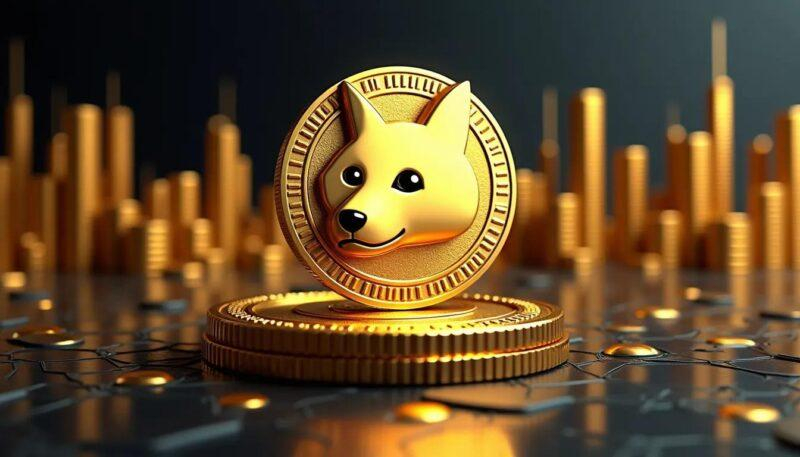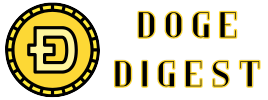In the ever-evolving world of digital currencies, Dogecoin has emerged from its origins as a playful meme to a noteworthy player in the blockchain landscape. Often overshadowed by its more prominent counterparts, this quirky cryptocurrency harbors unique features that merit closer examination. In this article, we peel back the layers of Dogecoin’s blockchain architecture, exploring the key elements that define its operation and distinguish it within the crypto ecosystem. Join us as we unravel the technology behind Dogecoin, shedding light on what makes it tick beyond the surface of internet culture.
Understanding Dogecoin’s Origins and Community Impact
Born out of an internet meme, Dogecoin’s journey from a playful joke to a vibrant digital currency is nothing short of remarkable. Its creation in 2013 was intended to be lighthearted, leveraging the beloved Shiba Inu dog from the “Doge” meme. Yet, beneath this whimsical exterior lies a blockchain technology that embraces simplicity and inclusiveness, fostering an enthusiastic user base that values community-driven growth over speculative gains.
The essence of Dogecoin’s appeal can be traced back to its unique community ethos, which emphasizes generosity and accessibility. Unlike many cryptocurrencies that focus heavily on technological innovation or financial elitism, Dogecoin’s community is known for:
- Charitable fundraising efforts, such as supporting clean water projects
- Sponsoring sports teams and athletes
- Encouraging micro-tipping online to reward content creators and positive social interactions
This spirit of giving has cultivated a welcoming atmosphere that continues to invite newcomers and casual users alike.
| Feature | Impact on Community |
|---|---|
| Low Transaction Fees | Encourages frequent, small-value transactions |
| Fast Block Time (approx. 1 min) | Enables quick confirmation, suitable for tipping |
| Inflationary Supply | Discourages hoarding, promotes spending and circulation |
Exploring the Technology Behind Dogecoin’s Blockchain
At the core of this meme-inspired cryptocurrency lies a robust blockchain architecture that draws heavily from Litecoin’s proven technology. Unlike many contemporary cryptocurrencies aiming for complex consensus mechanisms, this blockchain embraces a Proof-of-Work (PoW) protocol, emphasizing security and decentralization. The use of the Scrypt hashing algorithm distinguishes it with faster transaction validation and less energy consumption compared to Bitcoin’s SHA-256.
This technology enables rapid block generation, approximately every 1 minute, significantly quicker than Bitcoin’s 10-minute block time. This speediness is critical for microtransactions and day-to-day exchanges, fostering a vibrant community economy. Some hallmark features include:
- Inflationary supply model: Unlike capped cryptocurrencies, new coins continue to be minted, ensuring constant miner incentives.
- Low transaction fees: Making it one of the most accessible coins for peer-to-peer payments.
- Strong meme culture integration: Fueling grassroots adoption through social engagement.
| Feature | Specification | Impact |
|---|---|---|
| Block Time | ~1 minute | Fast transaction confirmations |
| Consensus | Proof-of-Work (Scrypt) | Secure & energy-efficient mining |
| Total Supply | Unlimited (Inflationary) | Continuous miner rewards |
| Average Tx Fee | ~0.01 DOGE | Affordable microtransactions |
Transaction Speed and Efficiency Compared to Other Cryptocurrencies
Dogecoin distinguishes itself in the bustling world of cryptocurrencies with its notably swift transaction speeds. Leveraging a block time of just 1 minute, Dogecoin processes transactions significantly faster than Bitcoin, which averages a 10-minute block time. This rapid confirmation time makes Dogecoin a practical choice for everyday micropayments and tipping, where waiting several minutes can feel cumbersome. The streamlined efficiency is further enhanced by Dogecoin’s simplified algorithm based on the Litecoin protocol, which optimizes the balance between speed and network security.
When stacked against other cryptocurrencies, Dogecoin’s performance shines particularly in its low transaction fees and scalability. Unlike Ethereum, which faces gas fee spikes during network congestion, Dogecoin maintains consistently low costs, ensuring affordability and accessibility for users. Moreover, its Proof-of-Work consensus mechanism, combined with a high block generation rate, supports a higher throughput of transactions per second (TPS), reducing bottlenecks during high network activity periods.
| Cryptocurrency | Block Time | Average TPS | Typical Fees |
|---|---|---|---|
| Dogecoin | 1 minute | 30 | ~$0.01 |
| Bitcoin | 10 minutes | 7 | ~$2.50 |
| Ethereum | 13 seconds | 15 | Varies (can be >$5) |
| Litecoin | 2.5 minutes | 56 | ~$0.10 |
Ultimately, Dogecoin’s blend of speed, low fees, and user-friendly transaction times makes it a unique player among digital currencies. While it may not boast the highest TPS or the most sophisticated technology, its efficiency for everyday transactions continues to fuel its popularity, especially within online communities and content creators looking for quick, reliable payment methods.
Security Protocols and Network Stability in Dogecoin
At the heart of Dogecoin’s resilient network lies a robust security framework designed to safeguard transactions while maintaining decentralization. Powered by a Proof-of-Work consensus mechanism, Dogecoin leverages the Scrypt algorithm-a lighter alternative to Bitcoin’s SHA-256. This choice not only enhances mining accessibility but also fortifies the network against potential attacks by distributing hashing power across a diverse, global community of miners.
Key security components include:
- Decentralized mining: Minimizes the risk of single points of failure or control.
- Continuous block generation: Blocks are created approximately every minute, ensuring quick confirmation and higher transaction throughput.
- High network hash rate: A significant measure indicating the computational power protecting the blockchain from malicious actors.
- Regular software updates: Ongoing improvements address vulnerabilities and optimize network reliability.
| Feature | Impact on Stability | Security Benefit |
|---|---|---|
| Scrypt Algorithm | Efficient mining with reduced centralization | Resists ASIC domination & promotes fair mining |
| 1-minute Block Time | Faster transaction confirmations | Higher throughput reduces network congestion |
| Large Miner Base | Robust protection against attacks | Ensures network decentralization |
Practical Tips for Safely Investing and Using Dogecoin
Start with Thorough Research: Before diving into Dogecoin, invest time in understanding its unique blockchain architecture and community-driven origins. The crypto market is volatile, so knowing the historical price trends and commonly used wallets can help you avoid impulsive decisions. Keep in mind, Dogecoin’s inflationary supply model means more coins enter circulation over time, emphasizing a long-term perspective rather than quick flips.
Secure Your Digital Assets: Protect your Dogecoin investments by choosing reputable wallets that offer strong encryption and, if possible, hardware wallet compatibility. Always enable two-factor authentication on exchanges, avoid public Wi-Fi when transacting, and periodically back up your wallet’s seed phrase securely offline. These steps act as your fortress against hacks and accidental loss.
Consider diversifying your portfolio to mitigate risk. While Dogecoin’s community appeals to many, balancing your exposure with other cryptocurrencies or traditional assets can stabilize returns. Below is a simple risk management table tailored for Dogecoin enthusiasts:
| Investment Aspect | Recommended Strategy | Reason |
|---|---|---|
| Position Size | 5-10% of total portfolio | Limits overexposure to volatility |
| Backup Frequency | Weekly | Reduces risk of loss from device failure |
| Use of Exchanges | Top-tier with strong security measures | Minimizes fraud and withdrawal issues |
- Stay Updated: Follow trusted blockchain news sources and Dogecoin social channels to catch crucial updates.
- Beware of Scams: Never share private keys; avoid “too good to be true” offers.
- Test Small: When trying new wallets or platforms, perform test transactions with small amounts first.
Q&A
Q: What is Dogecoin, and how did it originate?
A: Dogecoin started as a lighthearted cryptocurrency in 2013, inspired by the popular “Doge” meme featuring a Shiba Inu dog. Created by Billy Markus and Jackson Palmer, it aimed to be a fun and friendly alternative to Bitcoin, quickly gaining a passionate community.
Q: What blockchain technology underpins Dogecoin?
A: Dogecoin runs on its own blockchain, a decentralized ledger that records transactions transparently. It is a fork of Litecoin, inheriting the Scrypt proof-of-work algorithm, which sets it apart from Bitcoin’s SHA-256, allowing for faster and more efficient mining.
Q: How does Dogecoin’s blockchain ensure security and trust?
A: Dogecoin relies on miners who solve cryptographic puzzles to validate transactions and add new blocks. This proof-of-work system incentivizes honest participation, making it difficult for malicious actors to alter the ledger without significant computational power.
Q: What are the key features of Dogecoin’s blockchain?
A: Dogecoin features a rapid block time of one minute, enabling quick transaction confirmations. It also has an uncapped supply, with continuous issuance of new coins, promoting inflationary economics that encourage spending rather than hoarding. Its active and friendly community further supports its ecosystem.
Q: How does Dogecoin differ from other cryptocurrencies like Bitcoin or Ethereum?
A: Unlike Bitcoin’s capped supply of 21 million coins, Dogecoin’s supply is limitless, with about 5 billion new coins added each year. This helps maintain low transaction fees and fast processing but also means Dogecoin functions more as a currency for tipping and microtransactions rather than a store of value or smart contract platform like Ethereum.
Q: Can Dogecoin’s blockchain support smart contracts or decentralized applications (dApps)?
A: No, Dogecoin’s blockchain is primarily designed for peer-to-peer transactions and doesn’t currently support smart contracts or dApps. Its focus remains on simplicity, speed, and accessibility rather than extensibility.
Q: What role does Dogecoin’s community play in its blockchain environment?
A: The Dogecoin community is vibrant and resourceful, often driving adoption through tipping, charitable donations, and sponsorships. This social aspect enriches the blockchain’s purpose, making it more than just technology-it’s a culture of generosity and fun.
Q: What challenges does Dogecoin face in the blockchain space?
A: While Dogecoin excels in accessibility and speed, its uncapped supply leads to inflation, which some see as a limitation in value retention. Additionally, it lacks feature upgrades like smart contracts, which could restrict its long-term use cases compared to more programmable blockchains.
Q: How can one get started using Dogecoin?
A: Getting started involves acquiring Dogecoin through exchanges or mining, setting up a compatible wallet, and using it for transactions or tipping online. Its straightforward blockchain and active community make entry approachable even for newcomers.
Q: What future developments might shape Dogecoin’s blockchain?
A: Innovations could include improvements in scalability, enhanced security measures, or integration with other blockchain platforms. However, much depends on community support and developer engagement to evolve Dogecoin beyond its original design.
The Way Forward
As the digital landscape continues to evolve, Dogecoin stands as a fascinating chapter in the story of cryptocurrency-combining playful origins with robust blockchain mechanics. By unraveling its key features, we gain a clearer picture of how this meme-born token has carved out a unique niche, both as a medium of exchange and a community-driven phenomenon. Whether you’re a seasoned crypto enthusiast or a curious newcomer, understanding Dogecoin’s blockchain essentials offers valuable insight into the diverse ecosystem shaping the future of decentralized finance. The journey of Dogecoin is far from over, and its blockchain foundations ensure that it remains a noteworthy player in the ever-expanding crypto narrative.






